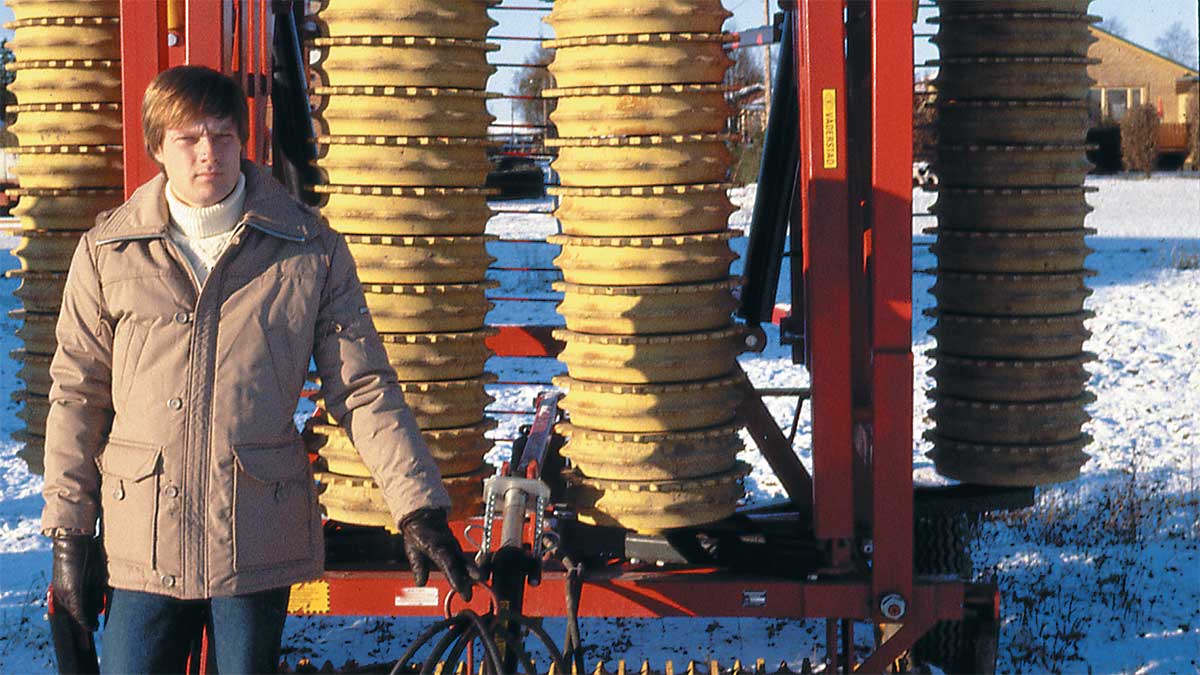Inspiration from immobile roller
Rollers had not advanced technically in a very long time. There were different hitching devices for field work and transport and preparing the roller for transport required a lot of muscle. Then followed a risky journey with the roller sections in a coiling, rattling tow to the next field.
At the 1976 World Ploughing Championship, my attention was drawn to a roller manufacturer, which demonstrated how easy it could be to prepare a roller for transport. But the ground was wet after a night of rainfall and the roller would not shift. I almost got a revelation in that moment. The solution must be to build the roller into a frame, give the roller sections a soft suspension and using hydraulics to fold it.
Roller with limited slip differential
The work to put these ideas into practice began to gather momentum the following autumn. Some kind of suspension was required for the task – both to cope with rock as well as adapting to the ground surface. Väderstad’s classic rubber suspension was born – 4 rubber bars inserted in a 4-sided beam, in order to dampen and absorb shock and adapt to the ground conditions. In the development work the roller rings where made more wavy in order to better grab hold of rock and push it into the ground.
Another early idea was to press the roller sections together on the shaft with spring washers at the time of manufacture, so that the rings drive each other and do not stop spinning – much like a limited slip differential.
Rolling the fresh snow
Overnight on New Year's Eve, my brother Andreas and I welded the final details and brought the new creation out in the fresh snow outside the workshop to test it on New Year's Day in 1977. Väderstad subsequently quickly emerged as Europe's leading packer manufacturer. Nowadays, all brands use a similar construction for their packers, but few – if any – use rubber suspension.
For the farmer, the benefits were very clear. The changeover between fields as well as transport went tremendously quicker and required zero manpower. Once in the field you could drive much faster because the packers were heavier and tolerated higher speeds. It more than doubled capacity.
